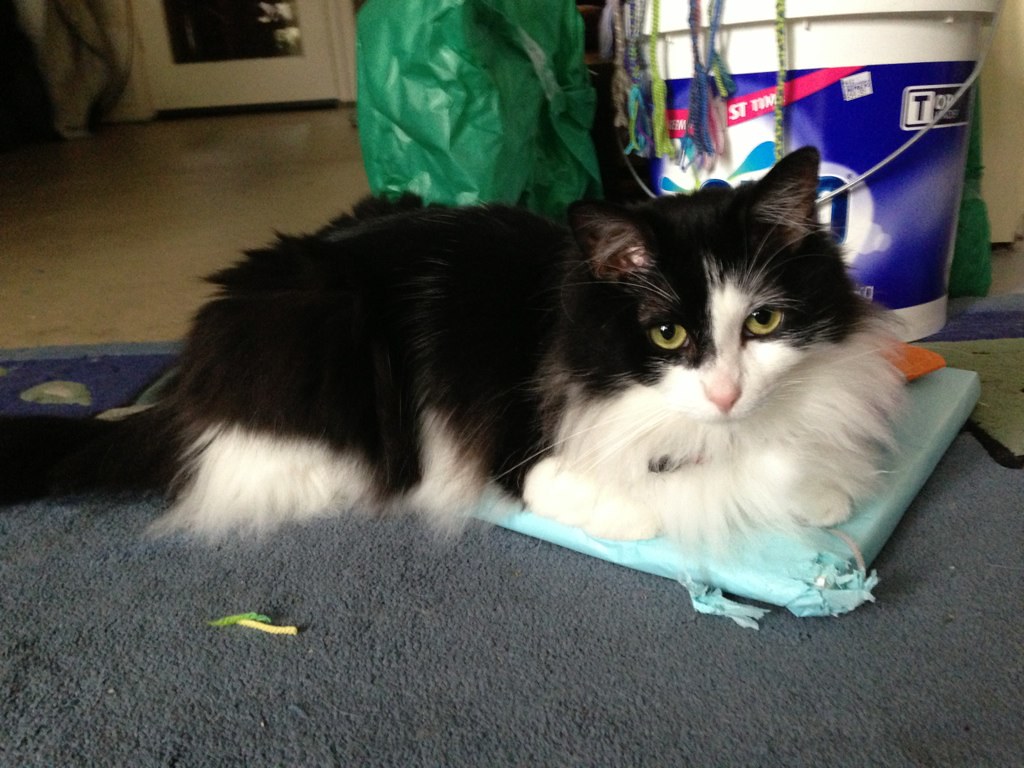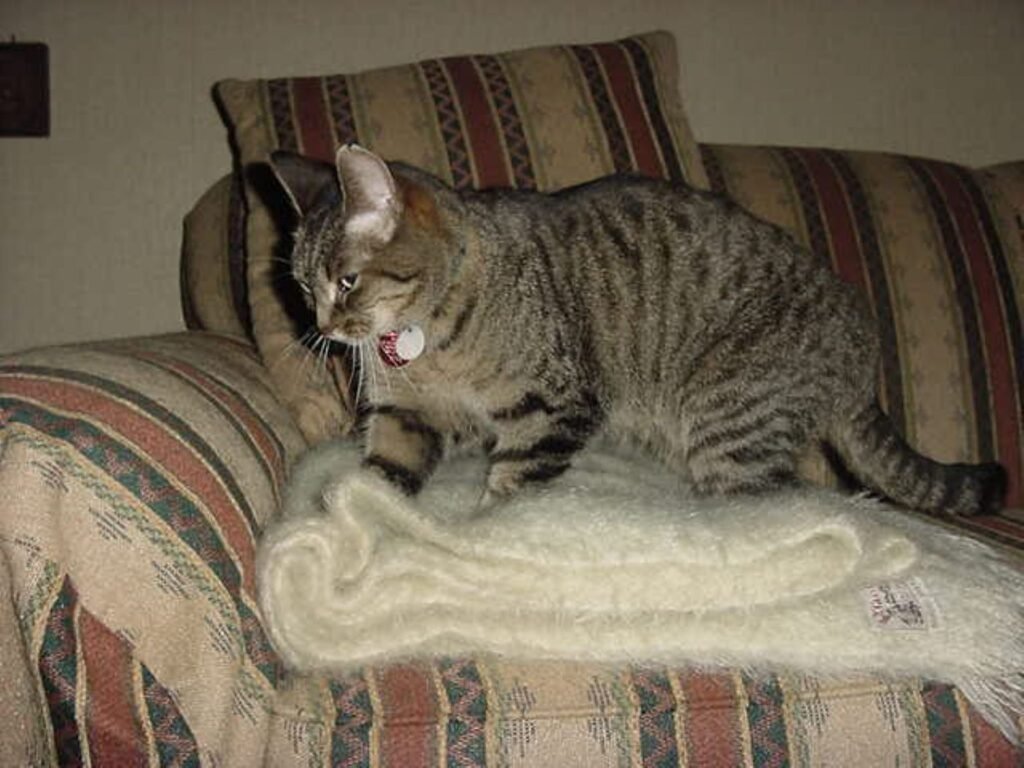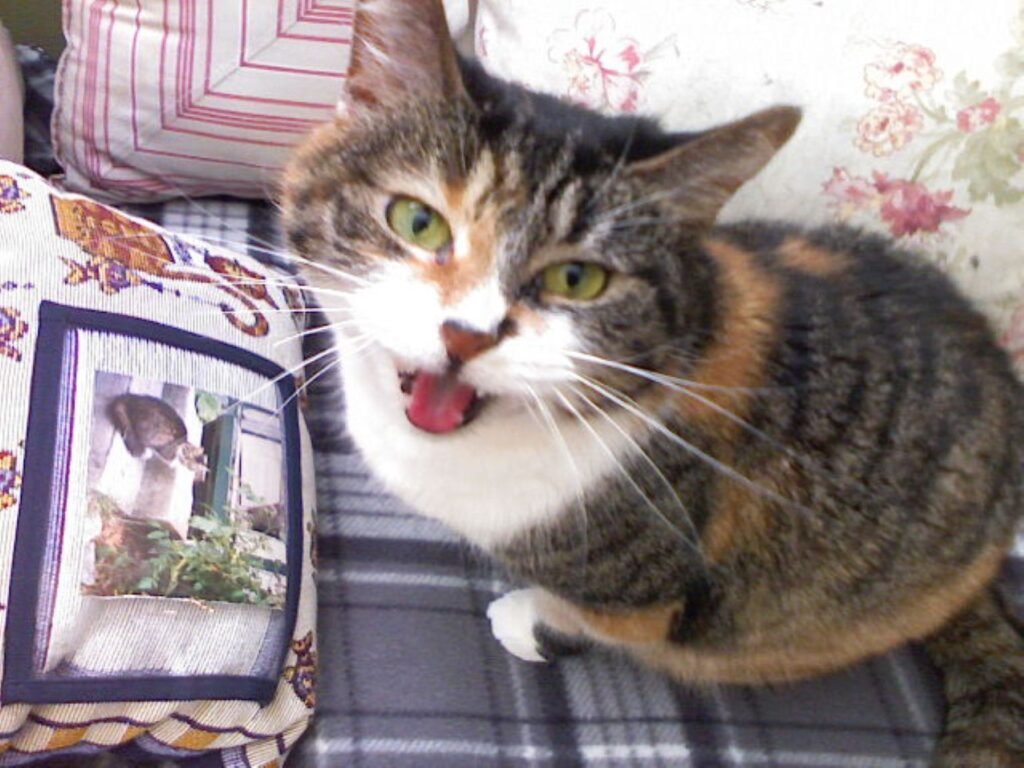Being a cat parent comes with unique joys and responsibilities that differ from caring for other pets. You’re not just providing food and shelter – you’re building a relationship with an independent yet affectionate creature that has its own mysterious ways of showing love and trust.
From understanding their subtle communication signals to recognizing when they see you as family, there are clear indicators that reveal how well you’re meeting your feline friend’s needs. Some behaviors might surprise you, while others confirm what you already suspected about your bond with your whiskered companion. Let’s explore what makes a truly great cat parent and identify areas where even the most dedicated owners might need to improve their approach.
Your Cat Greets You at the Door

When your cat runs up to meet you when you get home from work, you know you’re in the good books. This behavior shows they’ve been eagerly waiting for your return and consider your presence important in their daily routine. Cats greet each other by getting close and touching when they reconnect, and your cat may show they are bonded to you by approaching and touching you.
If your cat’s tail quivers when you get home from a day out, it’s a sign kitty is excited to see you! This enthusiastic welcome demonstrates that you’ve successfully built a strong emotional connection with your feline friend. Many cats will even vocalize their excitement through chirps or meows specifically reserved for their favorite humans.
They Sleep Near or With You

If your cat chooses to sleep with you, they’re expressing their deep trust and love, much like a child who feels safe sleeping near their parents during a storm. Sleep is an incredibly vulnerable state for any animal, so sharing this time with you shows complete trust in your protection. A happy cat is often a social sleeper.
Some cats prefer sleeping at the foot of the bed, while others curl up right next to their human. Both behaviors indicate you’ve created a secure environment where your cat feels completely safe. This sleeping arrangement also strengthens your bond through shared scent and warmth throughout the night.
Your Cat Brings You “Gifts”

The signs include grooming you; sleeping with you in your bed to protect you from predators; bringing you their toys to “feed” you and teach you how to hunt. Though it might seem strange when your cat drops a toy mouse at your feet, this behavior shows they view you as part of their family unit. They’re essentially trying to contribute to the household’s “hunting” success.
These gift-giving episodes demonstrate that your cat sees you as someone worth caring for and providing for. Whether it’s their favorite toy, a hair tie, or something they’ve “caught,” accepting these offerings graciously reinforces your special relationship. The behavior stems from their natural instinct to share resources with family members.
They Make Biscuits on You

Kneading, also known as “baking bread” or “making biscuits” to the pawrent, is when cats use their paws to massage a soft surface such as a human lap, cat bed, pillow or blanket. Kneading, where cats rhythmically press their paws into a soft surface, is a behavior they learn as kittens while nursing, and when your cat kneads you, it’s a sign of contentment, relaxation, and a strong bond.
According to the post, the main signs that your cat thinks you’re their mom include “making biscuits” on you, because when your cat was a kitten they used to knead their mom’s belly to stimulate milk. This behavior indicates your cat finds the same level of comfort and security with you that they once felt with their mother. The rhythmic pressing and often accompanying purring show pure contentment.
Your Cat Follows You Around

If your cat follows you around, it’s a sign they view you as an essential part of their world, much like kittens follow their mother. This “shadow” behavior demonstrates that your cat enjoys your company and wants to be involved in your daily activities. They show you in all sorts of ways: They follow you around.
While some cats are naturally more independent, a cat that consistently seeks out your presence throughout the day has formed a strong attachment to you. They’re curious about what you’re doing and want to be nearby in case something interesting happens. This behavior shows you’ve successfully created a bond that makes them feel secure and connected to you.
They Respond When You Call Their Name

Cats have 64 muscles in their ears, and they’re especially skilled at ignoring people, but if your cat responds to its name when called, this means they think you’re their parent and they trust you deeply. Responding to their name when you call them is also one of the four main signs that cats think you’re their mom.
Experts, including veterinarian Teresa Manucy, suggest that cats not only can recognize their own name, but recognize tone of voice and certain words, but understand their owner’s actual voice. When your cat consistently comes when called, it shows they’ve learned to associate your voice with positive experiences and see responding to you as worthwhile. This level of communication indicates a well-developed relationship built on mutual respect and understanding.
Your Cat Grooms You

Cats groom each other to strengthen social bonds and express affection, and when your cat grooms you, they’re including you in their circle of trust, treating you like a member of their feline family. When your cat licks your hair, face, or hands, it’s a signal of affection and licking and grooming are a form of social bonding.
This behavior shows your cat sees you as worthy of their time and care. Licking is also a very social behavior between cats that shows they trust each other, and they’ll often extend this behavior to their paw-parents because they feel most relaxed with them. Though their sandpaper tongue might feel rough, accept these grooming sessions as the ultimate compliment from your feline friend.
They Show You Their Belly

A cat’s paw pads are sensitive and vulnerable areas, and if your cat freely shows you the underside of their paws, it’s a significant sign of trust, demonstrating that they feel safe and secure with you. When cats expose their belly to you, they’re showing complete vulnerability and trust. This is one of the most defenseless positions a cat can assume, so they only do this around people they completely trust.
Some cats will even allow gentle belly rubs, though others prefer you simply acknowledge this display of trust without touching. The fact that they’re comfortable enough to expose this vulnerable area shows you’ve created an environment where they feel completely secure and protected.
Your Cat Talks to You

Cats don’t usually meow at each other once they grow out of kittenhood and they develop this form of communication specifically for humans, so if your cat frequently meows at you, they’re making an effort to connect with you and express their needs or feelings. When cats meow and purr, this is a good sign, especially when their noises are high-pitched.
Your best conversations are with your cat, and you can talk for hours on end and you don’t even need a response. A chatty cat indicates they see you as someone worth communicating with and trust that you’ll listen to their needs. These vocal exchanges show your cat feels comfortable expressing themselves around you and has learned that you respond to their communication attempts.
They Bring You Into Their Play Sessions

Playtime for cats is more than just fun – it’s how they learn survival skills, and when your cat engages in playful behaviors with you, it’s a significant demonstration of trust and a form of social bonding. If you enjoy playing as much as your cat does, you’re certainly a great cat mum, and while older cats may play less, they still enjoy interacting with their owner.
When your cat initiates play with you or brings toys for interactive sessions, they’re including you in one of their most important activities. This shows they see you as a fun, engaging presence in their life rather than just a provider of necessities. Regular play sessions also indicate you’re meeting their physical and mental stimulation needs effectively.
You’re Overfeeding Your Cat

Overfeeding is a common but avoidable mistake many cat parents make that happens when a cat’s bowl is freely refilled multiple times throughout the day or too many treats are offered, and overfeeding your cat can lead to obesity and increase your cat’s risk of developing various health conditions. Many cat parents equate food with love, leading to overfeeding – a primary cause of obesity in cats, and free feeding, where food is left out all day, can exacerbate this problem.
Some of these include heart disease and liver disease, arthritis, pancreatitis, and diabetes. We’re seeing cats in constant misery from weight-related feline arthritis, or we’re being asked to euthanize cats with diabetes, and the key to ending obesity in pets lies with you, the pet owner, as you have the willpower to say no to a begging cat. Those pleading eyes can be hard to resist, but maintaining proper portion control is crucial for your cat’s long-term health.
You’re Skipping Regular Vet Visits

One of the most common mistakes made by cat owners is underestimating the importance of regular veterinary check-ups, as cats are known for hiding signs of illness, and by the time symptoms are noticeable, the problem may be more severe. Through routine veterinary care, veterinarians can identify health concerns early, so appropriate care and treatment can begin, and delaying diagnosis and treatment leads to reduced quality of life and, in some cases, a shortened life span.
Only about 49% of cat owners visit a vet every year, though annual vet visits can be life-saving. Even if your cat seems perfectly healthy, regular checkups allow for early detection of issues like dental disease, kidney problems, or other conditions that cats naturally hide. Senior cats over the age of 7-8 benefit from twice-yearly exams because their health can change rapidly.
You’re Not Cleaning the Litter Box Enough

A common mistake is either failing to clean the box regularly or placing it in an area that is too noisy or difficult for the cat to access, and cats are fastidious creatures and may refuse to use a dirty or improperly placed litter box, which can lead to accidents around the house. If you don’t keep the litterbox clean, you’re upping the chances that your cat won’t use it, and more importantly, cleaning the litterbox daily means you know what your cat’s up to.
Many cats will turn their nose up at a litter box that hasn’t been cleaned in awhile – and who can blame them – and going outside of the litter box might be your cat’s way of telling you it’s time to get out the scoop. Think of it from your cat’s perspective: would you want to use a dirty bathroom? Maintaining a clean litter environment shows respect for your cat’s natural cleanliness preferences.
You’re Using Punishment Instead of Positive Training

No matter what the behavior, remember that you should NEVER physically punish your cat in response. Punishment should be avoided, because it can cause your cat to become scared of you and, at best, will stop the undesirable behavior only when you are present. Cats are less likely to follow commands, but like training a dog, cats should be rewarded for good behavior, and never punished for being “bad”.
Using direct punishment in these instances most likely will not punish the motivation of the behavior, causing the cat to associate the presence of their owner with being yelled at or otherwise punished, and the cat will not associate the scratching of the couch with the punishment. Instead of punishment, focus on redirecting unwanted behaviors and rewarding positive actions. This approach builds trust rather than fear and creates lasting behavioral changes.
You’re Not Providing Enough Mental Stimulation

Some cats engage in problematic behaviors out of boredom such as lack of mental and physical stimulation, and similarly to a child where “negative” attention is better than no attention at all, humans actually inadvertently reward unwanted behaviors when the cat who is looking for some sort of response from the human might knock things off your dresser or scratch your furniture in hopes of gaining some attention.
Common cat care mistakes often include overlooking the need for mental stimulation in our feline friends, and while it might seem like cats excel at doing as little as possible, the truth is that they can get very bored without adequate engagement, and a bored cat can quickly become an unhappy and restless cat. Many behavioral problems stem from understimulated cats trying to create their own entertainment. Providing puzzle toys, interactive play sessions, and environmental enrichment prevents destructive behaviors while keeping your cat mentally healthy and engaged.
Conclusion

Being a great cat parent means understanding both what your feline friend needs and recognizing the signs that show you’re meeting those needs effectively. From the way your cat greets you at the door to their willingness to show vulnerability around you, these behaviors reveal the depth of trust and affection you’ve built together. The good signs indicate you’re successfully navigating the unique world of feline companionship.
However, even the most loving cat parents can fall into common traps that affect their pet’s wellbeing. Overfeeding, skipping vet visits, neglecting litter box maintenance, using punishment-based training, and failing to provide adequate mental stimulation are mistakes that can significantly impact your cat’s health and happiness. The beauty of recognizing these areas for improvement is that they’re all completely fixable with some awareness and effort.
Your relationship with your cat is built on mutual respect, understanding, and consistent care. By celebrating the positive signs while addressing areas that need work, you’re setting both you and your feline companion up for many happy, healthy years together. What do you think about it? Tell us in the comments.





